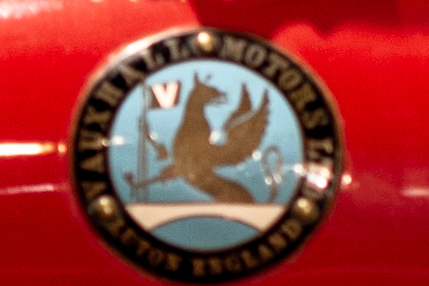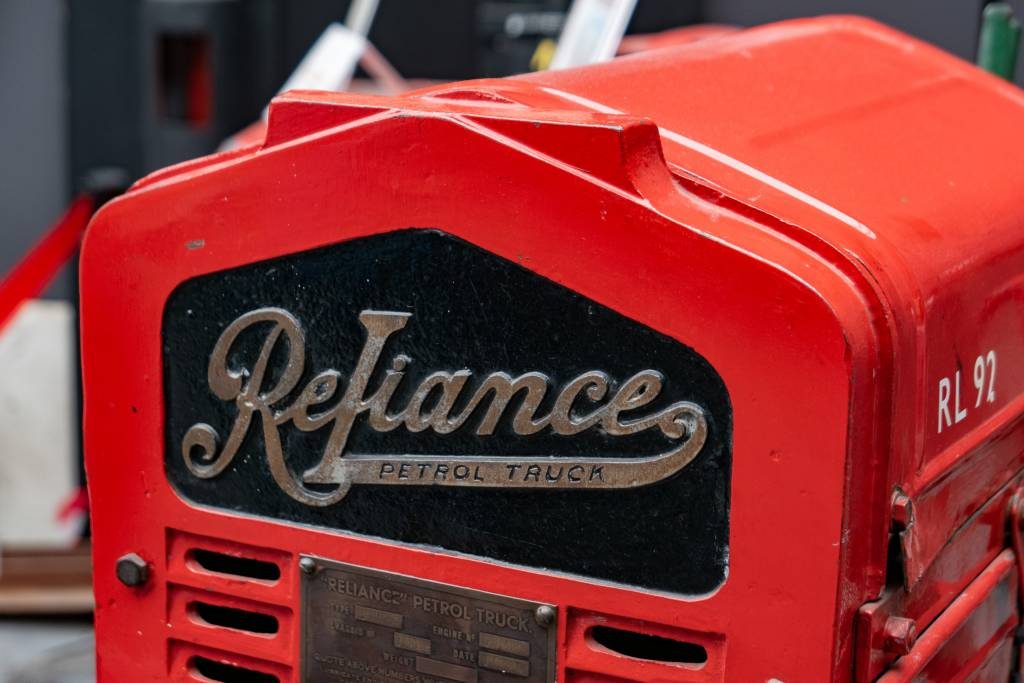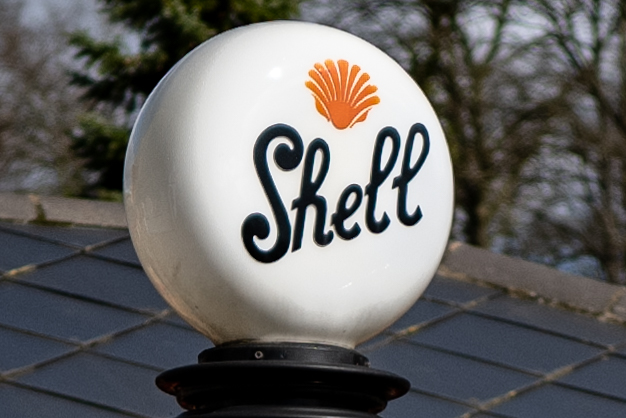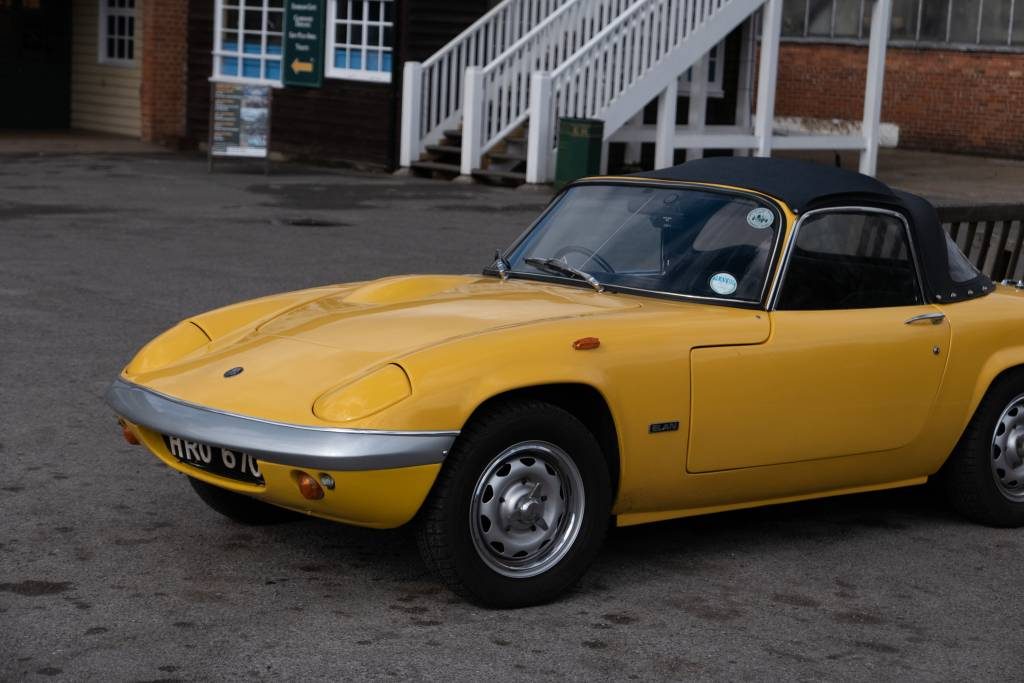“Serious” photographers have often tended to look down their noses at digital crops, maintaining that optical zooms (or longer primes) are the only answer if you want to get closer. They make an exception for walk-to-zoom, or “zoom with your feet”. That has always been perfectly acceptable, of course, and in the early days it was the only option.




But times they are a changing. Lens technology is improving and sensor densities seem to double every year. So much so, that digital cropping — given the right tools to play with — is almost becoming respectable. At least Leica seems wedded to the idea.
Crop to zoom
Leica’s chief lens designer, Peter Karbe, believes that with today’s high-performance lenses and superior sensors, crop to zoom is definitely a viable proposition. He made the point forcefully during his presentation to the LHSA 50th anniversary meeting in Wetzlar last October. He demonstrated it effectively with a shot taken on the SL with (if my memory serves), the 50mm Summilux-SL mounted. A brilliant lens, a 24MP sensor and a 100mm-equivalent image. And a superb resulting image, crop or no crop. A 47.3MP sensor can only add icing to the cake.

The images below compare the Q2 and D-Lux 7 at 28mm and 75mm equivalence. But look closer at the 75mm images and you find that the D-Lux 7, with its optical zoom, produces more detail despite having the smaller sensor (click to enlarge).






Even in the past six months, things have moved on. There has been a push towards bigger sensors, led by Sony, Canon and Nikon. Panasonic is poised with the S1R and Leica will undoubtedly follow them into the roaring forties for all its full-frame cameras. We have seen the first example in the Q2 with its 50MP sensor and 47.3M effective pixels. This is the sensor we will see later this year in the SL2.
All the image below are 75mm crops (left-hand column, Q2) or 75mm optical images (right-hand column, D-Lux 7). Click to enlage






In the Q2, this hugely capable sensor is married to a fixed prime, the 28mm Summilux which is optically identical to the lens of the first-generation Q from 2015. It is one of the finest fast primes in Leica’s arsenal and, when taken as a whole with the camera, makes the Q2 look something of a bargain.
Buy a similar 28mm Summilux-M for your rangefinder and it will set you back over £5,000, body not included. It may be half a stop faster than the Summilux in the Q2, but with the Q




75mm is the new 50mm
The Q2’s prime was always a cracker of a lens and is perfectly capable of servicing the higher-density sensor in the new camera. The combination has opened up even greater digital crop opportunities as Peter Karbe will point out, I am sure.
While the performance of the original Q at a 50mm-equivalent crop was acceptable, it was not outstanding. Now, however, a 50mm crop on the Q2 produces great results. With the Q2, in effect, we have a built-in, but much faster Tri-Elmar — with superb image quality at 28mm, 35mm and 50mm.
The Q2 sports an even bigger crop, to 75mm. It’s useful, but with only 6.6M effective pixels, this level of crop is likely to be “acceptable” in the same way that 50mm was on the Q1.




This brings me to the main subject of this article. Can we compare the performance of the Q2 and its optical 28-75mm zoom with that of the latest D-Lux 7 over the same range? On the one hand, we have a digital zoom with a huge sensor; on the other hand, an optical zoom (in a wonderful Summilux lens) on a relatively modest four-thirds sensor.
Guessing game
There is no prize for guessing that the Q2 will vastly outperform the D-Lux 7 at 28mm (note, incidentally, the D-Lux also offers the useful wider 24mm view). But how does it compare at 35mm, 50mm and 75mm?
Note that the D-Lux 7 sports a cropped four-thirds sensor. It is the same 20.3MP sensor found in the Panasonic GX8 and G9 but cropped to 17MP to facilitate the D-Lux’s trademark aspect ratio switching (1:1, 3:2, 4:3, 16:9). In contrast to micro four-thirds sensors which have a crop ratio of 2 (in relation to a full-frame sensor), the D-Lux 7 has a crop of 2.2.

As you see from the chart, the sensor of the D-Lux 7 may be an old tortoise, but it keeps plodding on while the lithe young 47.3MP chip in the Q2 soon tails off — faster than you might think because it isn’t a linear progression.
David Babsky addressed this in his erudite response to our article on the Olympus OM-D E-M1X and it is worth a second read.
On paper, then, the Q2 betters the D-Lux at 28mm, 35mm and (almost) at 50mm. This digital zoom gathers far more pixels at the wider angles and is only marginally inferior at 50mm. At 75mm, however, there is a marked fall-off. 6.6MP doesn’t sound much these days. Nevertheless, my initial test shots from the Q2 have been encouraging. Only when blowing up to ridiculous levels is the detail seen to be better with the optical zoom and the 17MP sensor.
Recommended Reading: Thorsten Overgaard’s interview with Peter Karbe
While this 75mm digital zoom option may be marginal, especially if you are planning on producing a print to fit the side of a bus, at more modest levels — such as images for a blog or for display on your iPad — it is perfectly acceptable. It is never going to equal the performance of a 75mm prime on an equivalent sensor. But we all know that, and it isn’t really the point. It’s a case of working with what you have, that is if you decide to make the Q2 your travel camera of choice.




Aversion to crop
Once you overcome your inbuilt aversion to crop-to-zoom, the use of a very high-performance prime on a camera with one of the latest 40-50MP sensors can offer a practical solution. Such a set up is capable of out-performing a camera with a smaller sensor and an optical zoom lens. But only up to a certain point.
This applies not only to the Q2 but to any equivalent camera and prime lens. For instance, the new 35mm Apo-Summicron-SL is said to be Leica’s finest design and, coupled with the upcoming SL2 or a Panasonic S1R, will offer good results in comparison with, say, a 35-90mm optical zoom. It is certainly a lighter proposition than a high-performance zoom covering the equivalent range.
Back to the D-Lux 7: There are probably better examples of digital versus optical zoom. Without a doubt, it would be interesting to compare the Q2’s digital crops with images from a comparable full-frame camera and a high-performance zoom lens. The conclusion is pretty foregone. The optical zoom would outperform the digital zoom at larger magnifications, everything else being equal.


But what has fascinated me is the comparison between the D-Lux 7 and the Q2 as a go-to, carry-everywhere camera. As it happens, I now own both these cameras, so I will be faced with the choice of which one to take out for the day.
While the Q2 is bigger and heavier (760g compared with 410g) it doesn’t feel that much larger in the hand. It’s also not going to fit in a coat pocket. But it is comfortable to hold and easy to use. It fits the bill as a competent one-camera-one-lens alternative. And for most of the time, in the 28-50mm range I am assured of better image quality.
Q2 Tri-Elmar
As a general
I was curious to discover whether the powerful Q2 with its top-level prime would make a better travel camera than the D-Lux 7 equipped with an equally impressive zoom lens.
While the Q2 can’t match the 24mm wide angle available on the D-Lux, it can hold its own over much of the range thanks to the larger sensor and fine prime lens.

For most purposes, too, I am happy with the 75mm-equivalent crop from the Q2. I know a 75mm optical zoom or prime would produce better results, but I can ignore that because the Q2 feels so right and most of my work will be done at wider angles.

It is a remarkable achievement for Leica and I believe the Q2 will repeat the success of the original Q. Plaudits are also due to the D-Lux 7 which performed extraordinarily well in these comparisons. When you remember that it costs less than a quarter of the price of the Q2, it makes a lot of sense.
What do you think about all this? Do you warm to the idea of a camera with a first-rate prime lens and built-in encouragement to crop zoom? Or is the only answer a bagful of primes or a top-class zoom?
It’s another case of horses for courses. But which horse, which course?


some years later now… but I would be interested in your thoughts on Q3 43 cropping. I’m impressed I must say though the cropped in characteristics are still this of the 43 of course. But nonetheless…
Des,
Yes, I had to visit this article and see what I had said five years ago. I couldn’t remember writing it! I think the answer is quite simple — that the higher the resolution of the sensor and the longer the lens, the further the reach for cropping.
Strangely enough, on Friday this week Bill Royce will be demonstrating this, partly with the aid of the Q3 43. I also touched on it in the recent crop story (the one featuring the Harris’s Depository shots front the X100, Q3, Ricoh GR, etc. the Q3 43 was a clear winner because if the two factors mentioned earlier.
Maybe it is possible to use the Fuji teleconverter (made for the X-100-V) on the Q2, that will means that the 50 crop changed in a 75 crop ( or the range will be 40- 50 – 75 – 105 ).
Thank you for a very interesting comparison. I’ve been using MFT for over a decade and my favourite lens combination for walk about photography has been the 14 f2.5, 20 f1.7 and 45 f1.8. With the two shorter lenses have been replaced with panny Leica 15 and 25 mm in recent times just to scratch the Leica itch.
I wonder if you have printed any of the 75mm images at A3 for comparison? I ask as on screen images can be quite misleading.
My heart is saying “buy the Q2 you know you’ve always wanted a Leica” whereas my head is saying “stick with the GX8 / G9 and three lenses and use the money to travel”. Ho hum!
I haven’t printed at 75mm but I did an article showing some prints done by Ivor Cooper at Red Dot Cameras shortly after the Q2 was launched. I was impressed. Certainly for the sort of use I have — mainly for this blog — the 75mm crops are great.
I too had a dalliance with MFT and owned some of the excellent Panaleica primes. I just decided I needed to rationalise and have moved mainly to full-frame, with the Q2 being most used. That said, MFT has its place as a smaller system and I can well understand people sticking with it and producing excellent results.
A very smart, brain-storming and helpful article for me.
Thank you, Mike !
Minh
Thanks, Minh
I forgot to mention, does anyone remember the allegedly satirical magazine known as Private Eye? One of the ongoing features in there, is a “letter” from “anon” asking if any readers have noticed the similarities between two people (especially if they are in the news).
e.g. http://www.private-eye.co.uk/lookalikes
How does this fit into the current piece here on Mike’s blog? Well I know that neither Mike nor Peter (Karbe) are “in the news”, but I wonder if they are in someway related?
I think we should be told. 🙂
Absolutely no relation, Stephen. The guy on the left designs superb lenses, the guy on the right waffles for a living. Always did.
Interesting article. How does high ISO performance compare (75mm cropped Q2 vs. D-LUX)?
Haven’t looked at that yet. Most of those shots were done outside or in good indoor lighting. Something to look at in future. Of course, we can already assume that the full-frame sensor of the Q2 will have a superior dynamic range to that of the D-Lux. From one or two other shots I’ve taken with the Q, I think it works up to 12,500 ISO but 25,000 and 50,000 are fanciful figures which look good on paper. The m4/3 sensor will perform less well, I am sure.
Thanks for clarification, Michael. I did realize that the graph was simple megapixels v focal length after I wrote my comment.
I guess that when I read the article the prepared mind was looking for something a bit more technical, especially when the graph is used to decide if something is “better” as referenced in the adjacent text.
I don’t do technical. I’m the Mr Subjective of the blogging world. That way I can’t be contradicted.
Hello Michael. Very interesting comparisons. I’m sure that many of the features of the Q2 make it an excellent camera, and that its owners will be proud to have that great piece of technology. However, I do have some reservations about over-interpreting image quality, especially as it presents on iPad and computer screens.
First, the comparison photos are interesting, but the D Lux 7 images as I see them are slightly darker in a numbers of the comparisons. If they had just a touch more brightness in post-processing they might look a bit more vibrant. Maybe it is a function of the D Lux 7 camera, and a click of exposure compensation would have yielded a similar brightness compared to the images of the Q2. Hard to compare apples with apples when there is that slight difference in image brightness, for me at least.
Second, I’m really confused by the science. What does the graph in the Guessing Game section really show? What is the Y-Axis measuring? In what regard is the Q2 scoring between two and more than three times better than the D Lux at 35mm and 28mm? Unless I’m looking cock-eyed I’m not seeing the images subjectively two to three times better at 35mm and 28mm. And your comment that the “Q2 betters the D-Lux ….(almost) at 50mm” is …..well, just not so judging from whatever is being measured on that graph. The data is the data, the numbers are the numbers, whatever they are.
Thirdly, to reiterate, yes there are a lot of great features in the new Q2 but the digital zoom just isn’t up there on my list. Adding a counterpoint, for anyone who likes to shoot in a sweet spot of 40-50mm and beyond, your comparison shows that the D Lux 7 is a great camera. Especially when the arithmetic of a cost/benefit analysis is added to the mix.
(I’ll stop at that. It’s probably evident that I’m feeling a bit cranky today as I continue to wait for my D Lux 109 (6.5?) to be diagnosed – it has developed the irritating “voltage-discharge-of battery-over-three-days” when a charged battery is left in the camera, even when camera is switched off. Not an unknown problem on the D Lux 109 and its sibling Lumix LX100. Bah Humbug!)
Wayne, the graph is a very simple comparison of megapixels at the various focal lengths. Any zoom lens will produce the same MP count at any angle of view but the cropping on the Q2 results in a sharp drop off in MP count as the reach increases. I haven‘t attempted to add in the Babsky Rule.
As for image brightness. Yes, I noticed this as well and it is down to my PP (these are not jpegs, as I mentioned in the article). I ought to have increased exposure on the D-Lux images.
As you rightly say, at blog levels, the difference between the FF Q2 and m4/3 D-Lux isn‘t going to be dramatic. I‘ve often said that if I simply wanted to illustrate the blog I could happily use an iPhone for all the difference it would make. We just have to assume that at, say, 28mm, the Q2 image will knock the socks off the smaller sensor image.
Great article Mike – enjoyable and great to get down to what it really means – all the best from the Alps
Jono Slack
Thanks, Jonathan. At least it is stirring up some controversy, which was intended. Stephen Jenner sensibly asks why I didn‘t choose the CL and 18-55 for this comparison, and his comment has a lot of sense to it. The simple fact is that I didn‘t think. I will try to do some comparisons with the CL in future. As Wayne points out, however, at blog sizes and resolutions it doesn‘t much matter what camera you use! We just have to imagine those shots blown up to A3…
I know that you’re head over heels in love with your Q2, Mike, but it just doesn’t make sense to me.
You’re paying £4,250 to effectively throw away multiple megapixels of resolution which you’ve just paid for, every time that you crop ..that’s to say, every time that you don’t use it at 28mm.
I’ve written more about this, with some large photo examples, to explain what I mean ..here: http://edituk.com/Cropped_from_28mm.html
But I’m glad you’re enjoying it..
I knew you would say that! As with everything, there is head and heart. I know there are cheaper options, better ways if zooming in, but I do love the concept of the Q2. Let’s wait six months and see if I am still in love!
The only reason that I noticed Mike was when I came to send my comment, I had to fill in my nom-de-plume again.
But then now that I know, I could get the same effect by ticking the box to “save my details for the next time”.
Done.
That’s what our web designer suggested. I am just a little uneasy about giving access to the site (even if simply as subscriber) when we are clearly getting an overwhelming number of spam registrations. It could be a back door one of these days, so better to suppress it now.
Hi David,
I enjoyed your near scientific analysis of this issue. The bit that resonates most with me as a Yorkshireman is the fact you are have calculated the rough cost of how much you are throwing away when you crop an image. I throw as little away as I can.
Dare I mention that pound for pound, my Df is still a cheaper full frame option. lol.
Mike – I will be curious as to how long this stays in the Evans collection, until your Gas takes over again and you buy the newest next best thing down the road. I will still be churning out on my X and my Df. I have started to do some comparisons of image output between the two camera’s.
Dave
Dave, if I didn‘t try all these cameras I wouldn‘t have much to write about. I tell myself that I owe it to Macfilos readers to try different things. I do keep a close eye on depreciation and try to sell at the right time (for instance, when I suspect a new model is due within the next three months). It stands to reason that you’ll get a better price before the latest and greatest hits the market. Anyway, that’s my reasoning and I’m sticking to it.
I like your reasoning for doing it – Mrs S usually tells me that sounds like an excuse for spending on something. I must admit it does make interesting fun as we never know what comes next.
Good to see an outbreak of the war of the roses beneath. My Gran used scold me for dropping tha’s t’s in speech.. lol. And she was a Brummie. Apparently one was not speaking proper. double lol.
Eh-up! As a Lancastrian – nay, Mancunian – ah’ve kept ev’ri piece o’ string since 1952 (..for those in the Antipodes and elsewhere, from the Wars of the Roses (1450s) onward, Yorkshiremen and Lancashire folk outdo each other in frugality; Dave were brought up in a matchbox ..we din’t ‘ave even a matchbox ..we lived in’t snail shell ..etc..)
It’s difficult to buy £4,250’s worth of camera, and then throw away most of it to keep just a fraction of its 47 megapixels – at 11,000 pixels per £pound! ..Why, I’ve got pixels ‘ere from 1979 from Mr Morita of Sony at thru-pence-ha’penny a dozen, and ah’m keeping’ them fo’ mi grandkids when the’ll be worth five-and-fourpence-ha’penny each ..etc, etc..
It simply goes against the grain to buy them and throw them away ..tha knows..
Eee, until I were 17 or thereabouts I talkt just like that, tha’knows. I were reet broad ’til I got t’t South when t’tide turned. Now when I goes back t’t Pier at Wigan they says, “dunn’t he talk posh”, yet in’t South they’re always pointing out them Lanky vowels hiding behind t’southern veneer.
“..t’southern veneer..”?
We couln’t afford t’southern veneer; we mak’d do wi’ raw deal!
Our lavvy were two streets away. Ok in ‘t Summer but f’freezing in’t winter. And that newspaper didn’t ‘alf leave ink stains. You posh Manchester types don’t know how bad things was down’t East Lancs road.
East Lancs Road? ..I remember t’East Lancs Road as one o’ them wi’ three lanes: one each side fer getting’ ter places and one in’t middle fer killing’ yourself on.
(I once had a holiday job as a projectionist at the ‘Ellesmere’ on t’East Lancs Road; Mickey Mouse for children’s matinées, and ‘The Ipcress File’ for the evening show!)
I wouldn’t mind betting The Ellesmere had double “courting” seats on the back row for 1/6 a pop. I had an aunt of vast proportions who used to buy two one-and-sixpenny tickets so she could sit in comfort on the couches at the Savoy in Atherton (not far from your cinema, I suspect). Enough!
David, trust me I am frugal, Or as some of my staff often point out – “He knows the cost of everything.” I also take the spend to save adage to the extreme at times. Thankfully I married someone who understands my financial thinking, and gets it. If I spend unwisely anywhere – it is that I open the bank of dad a little too often.
I do use everything until it breaks or dies. My 2012 MacBook is now operating with a dongle wifi connector, as the wifi card has packed up – but the dongle cost £10 versus about £50 and five hours with a soldering iron for myself, or sending the Mac off to a specialist so around £175 to fix – and Apple wont look at it as I fitted an SSD myself when the HD packed up. So the £10 option it is. I intend to replace it, but I don’t like the current model range, so I am stumped at the mo.
Nothing the matter with a dongle ..and if that packs up, it’s only another tenner – or less – to plug in another one! Sounds like sense to me!
At DavidB, Thanks for your experiment, some really interesting results.
Having said in my previous comment that effectively you do what you can with the camera in your hand, walking to zoom with a 28mm lens can lead to some unflattering shots.
I reckon that for general use, an optical zoom would be most appropriate, whilst the primes are better used at their prime length and selected for their effectiveness in a given scene.
To say nothing of tripods and filters, but then we are getting really esoteric.
“..say nothing of tripods and filters..” ..good idea; I won’t.
“..we are getting really esoteric..” ..er, esoteric tripods? Oh, I did once have a Gandolfi tripod, but that weren’t esoteric, that were knotty pine (..whoops, sorry; dialect and accent slipped over from previous post).
I did used to have some esoteric(?) BBC effects records (78s). The groove started near the label, and spiralled out towards the edge ..gave better sound that way, ‘cos the needle travels quicker through the groove near the outer edge. But maybe that’s “edgesoteric”..
Mike, it would have been interesting to have added the CL with “kit zoom” to your experiment, especially since yesterday, you were thinking out loud regarding the future of your CL.
However, when it comes down to it, if the snapper got the shot, sharpness is neither here nor there, so any camera, any lens and any form of crop (or none) would have been good enough, especially if it was unique or important either historically or in some other way.
N.B. Has the log in form been “disappeared” or am I just being Mr. MaGoo?
I do intend to look at the CL as well. I have a commission to check out the viewfinder against that in the Q, among other things.
You are quite right. The login has disappeared. It was something that came with the bundle and I wasn’t sure what it was for. We got about 100 registrations but some 40% were spammers. So we decided to turn it off. I was intending to write to all the non-spammers since I suspect many of them have registered through the login instead of the mailing list form
As a matter of interest, what did the registration do for you? Does it make things easier? If so it might be worth reinstating. I’m open to I views on this.
Hello Mike,
I think the cropping system is a brilliant invention. I use it regularly with my ricoh GR even if the old version is only a 16 mp sensor. There’s only something like 7 mp when cropping at 47mm but it still enables me to enlarge a photo up to 40 by 60 centimeters with decent results (sorry I don’t master the inches yet!) on condition that you remain at base or relatively low iso. Some pictures presented in the aticles I’ve sent so far were cropped ones and unless you are pixel peeping you don’t see much of a difference with the images taken at 28mm. Of course one must bear in mind that you’ll never print a photo of 1 meter by 2 when cropping. Yet photographes like Daido Moriyama have made very large prints shot with a ricoh GRD and it’s tiny 10mp ccd sensor.
The second advantage is that you have 3 or 4 focal lenses within one. It’s much lighter than a big zoom lens that will cover approximately the same focal range. Carrying heavy and bulky zoom lenses is not something I am particularly looking forward to and I do appreciate the weight of the ricoh outfit.
Finally this cropping system enables to have a camera that you’ll take with you on any outings whether you’re going to make images or not. A leica Q/Q2 remains a relatively small camera that you can take anywhere (I did try the Q for a whole day at a leica workshop and the 50mm crops were very good). It is packed with all the features you expect from an excellent camera and I guess it offers all one needs in a camera if you don’t do sports and wildlife of course.
Jean
All true. And the advantage of the Q2 over a zoom is that you have several primes to play with. A full-frame zoom lens to equal the Q2’s single prime would be the size of the SL24-90. On the crop front, I think I’m right in saying that the Ricoh crops the image in the viewfinder whereas the Q/Q2 uses framelines, very reminiscent of the M system. So, for instance, with the 50mm frame lines, you actually see around the frame just as you do on the M. It is all very similar to using the M.
Very fascinating, but it really encourages me to go for the D-Lux 7 rather than dream of the Q2. I think the inability of digital cropping to change the depth of field and bokeh is decisive for me. I use optical zoom a lot for changing depth of field.
Of course the D-Lux 7 makes a sensible choice, particularly bearing in mind your point. That said, the difference in bokeh between the D-Lux and Q2 at 75mm didn’t look dramatic to me. See the images of the aircraft undercarriage. I like the D-Lux very much but I do find myself fiddling with the zoom more than I would like. In this sense, a fixed prime has its attractions. It makes a simpler and more practical travel option.